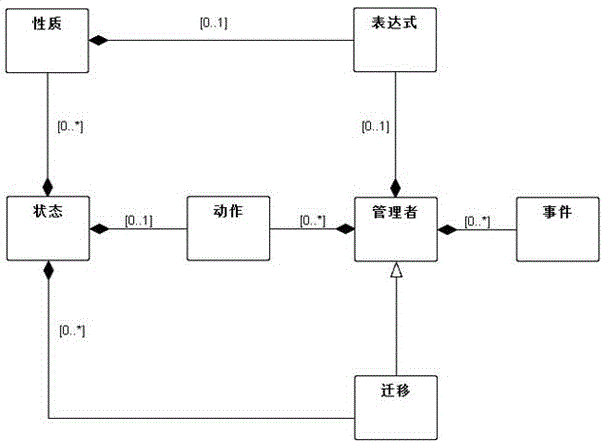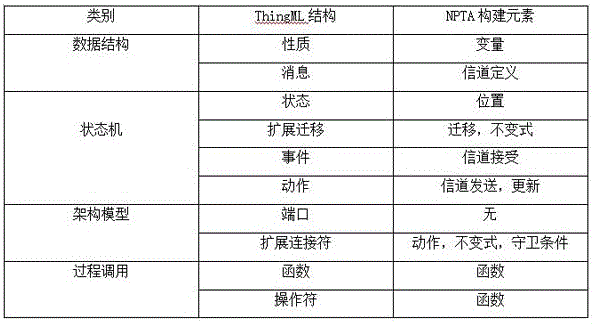Quantitative analysis method of ThingML (Modeling Language) model under uncertain environment
An uncertainty and quantitative analysis technology, applied in the computer field, can solve problems such as no uncertainty description semantics, inability to evaluate code performance indicators, and inability to guarantee software reliability, so as to reduce rework and overhead, and enhance modeling capabilities. Effect
- Summary
- Abstract
- Description
- Claims
- Application Information
AI Technical Summary
Problems solved by technology
Method used
Image
Examples
Embodiment Construction
[0043] In conjunction with the following specific embodiments and accompanying drawings, the invention will be further described in detail.
[0044] The present invention provides a quantitative analysis method for a ThingML model in an uncertain environment, comprising the following steps:
[0045] Step 1: Extend the syntax and semantics of ThingML, so that ThingML can model the uncertainty in the environment, and users provide the required quality of service (QoS) requirements;
[0046] Step 2: Use the Java class to parse the ThingML meta-model, and parse and obtain each required field of ThingML;
[0047] Step 3: Convert the ThingML meta-model into an NPTA model, including its front-end and back-end configurations
[0048] Step 4: Transform the nature of user service quality into query statements of UPPAAL-SMC, and perform quantitative analysis on the system, so that the service quality of the application of the Internet of Things can be evaluated and the corresponding des...
PUM
 Login to View More
Login to View More Abstract
Description
Claims
Application Information
 Login to View More
Login to View More - Generate Ideas
- Intellectual Property
- Life Sciences
- Materials
- Tech Scout
- Unparalleled Data Quality
- Higher Quality Content
- 60% Fewer Hallucinations
Browse by: Latest US Patents, China's latest patents, Technical Efficacy Thesaurus, Application Domain, Technology Topic, Popular Technical Reports.
© 2025 PatSnap. All rights reserved.Legal|Privacy policy|Modern Slavery Act Transparency Statement|Sitemap|About US| Contact US: help@patsnap.com



